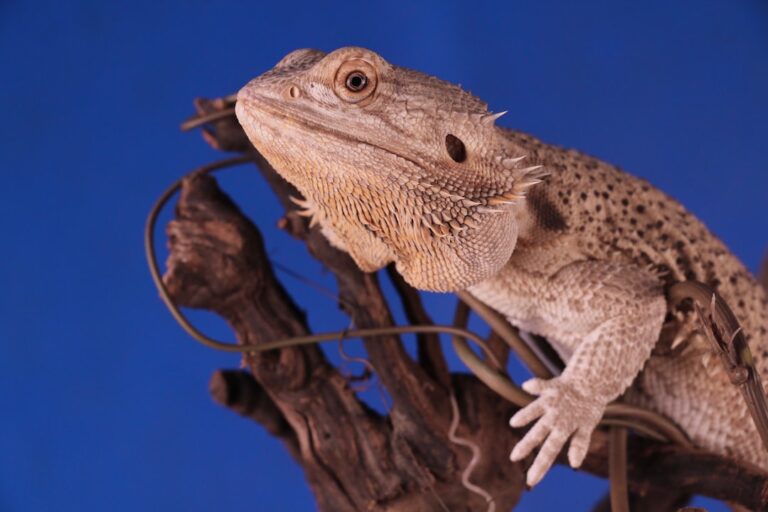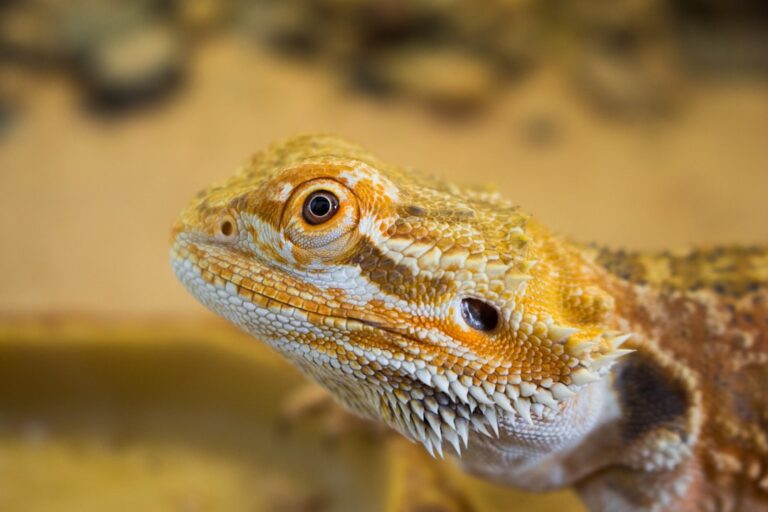Why Do Bearded Dragons Run Into Walls?
Bearded dragons are popular reptile pets known for their unique appearance and docile nature. These reptiles are native to Australia and have become increasingly popular as pets due to their calm demeanor and relatively low maintenance requirements. However, in order to provide the best care for these creatures, it is important to understand their behavior and natural instincts.
Understanding the behavior of bearded dragons is crucial for their overall well-being. By understanding their natural instincts and behaviors, owners can better meet their needs and provide a suitable environment. This knowledge also helps in identifying any abnormal behaviors or signs of distress, allowing for prompt intervention and appropriate care.
Table of Contents
Understanding the Natural Instincts of Bearded Dragons
Bearded dragons have a range of natural instincts that influence their behavior. One of the most notable instincts is their territorial nature. In the wild, bearded dragons establish territories and defend them against intruders. This territorial behavior can manifest in captivity as well, with bearded dragons displaying aggression towards other animals or even their owners.
Another important instinct is their instinct to bask in the sun. Bearded dragons are ectothermic, meaning they rely on external heat sources to regulate their body temperature. In the wild, they spend a significant amount of time basking in the sun to absorb heat and maintain their body temperature. This instinct is reflected in their behavior in captivity, as they seek out heat sources such as basking spots or heat lamps.
The Role of Vision in Bearded Dragon Behavior
Vision plays a crucial role in the behavior of bearded dragons. These reptiles have excellent vision and are able to detect movement from a distance. Their eyes are positioned on the sides of their head, giving them a wide field of vision. This allows them to spot potential predators or prey from various angles.
Proper lighting is essential for bearded dragons as it affects their behavior and overall health. In the wild, they rely on natural sunlight to meet their UVB requirements, which is necessary for the synthesis of vitamin D3 and calcium absorption. In captivity, it is important to provide UVB lighting to mimic natural sunlight and prevent deficiencies.
Factors that Contribute to Bearded Dragons Running into Walls
One common behavior that bearded dragons may exhibit is running into walls or glass enclosures. There are several factors that can contribute to this behavior. One possible reason is poor visibility. If the enclosure is not properly lit or if there are obstructions in the line of sight, bearded dragons may have difficulty navigating their surroundings and may inadvertently run into walls.
Another factor that can contribute to wall running is stress or anxiety. Bearded dragons are sensitive creatures and can become stressed by changes in their environment or handling. This stress can manifest as erratic behavior, including running into walls.
To identify the cause of wall running behavior, it is important to observe the dragon’s behavior and environment. If the enclosure is too small or cluttered, it may be causing stress and leading to wall running. Additionally, if the dragon is displaying other signs of stress such as loss of appetite or aggression, it may be an indication that something in its environment is causing distress.
The Importance of Providing Adequate Space for Bearded Dragons
The size of the enclosure plays a significant role in the behavior and well-being of bearded dragons. These reptiles require ample space to move around, explore, and exercise. Inadequate space can lead to stress and behavioral issues such as wall running.
Determining the appropriate size of the enclosure depends on the size and age of the bearded dragon. Hatchlings and juveniles require smaller enclosures, while adults need larger enclosures to accommodate their size. As a general rule, the enclosure should be at least 2-3 times the length of the bearded dragon.
In addition to the size of the enclosure, it is important to provide a variety of hiding spots, climbing structures, and basking areas. This allows the bearded dragon to engage in natural behaviors and provides mental stimulation.
How to Create a Safe and Stimulating Environment for Bearded Dragons
Creating a safe and stimulating environment is essential for the well-being of bearded dragons. Here are some tips for providing an optimal environment:
1. Temperature and Lighting: Bearded dragons require a temperature gradient in their enclosure, with a basking spot that reaches around 95-105°F (35-40°C) and a cooler area around 75-85°F (24-29°C). UVB lighting should be provided to meet their vitamin D3 requirements.
2. Substrate: Choose a substrate that is safe and easy to clean. Avoid loose substrates such as sand or gravel, as they can be ingested and cause impaction.
3. Hiding Spots: Provide multiple hiding spots throughout the enclosure to allow the bearded dragon to retreat and feel secure.
4. Climbing Structures: Bearded dragons are natural climbers, so providing branches or rocks for them to climb on can help stimulate their natural behavior.
5. Enrichment: Offer a variety of toys, such as tunnels or puzzle feeders, to provide mental stimulation and prevent boredom.
Common Mistakes Bearded Dragon Owners Make that Lead to Wall Running
There are several common mistakes that bearded dragon owners make that can contribute to wall running behavior. One common mistake is providing an enclosure that is too small. Bearded dragons require ample space to move around and exercise, so a small enclosure can lead to stress and behavioral issues.
Another mistake is improper lighting. Bearded dragons require UVB lighting to meet their vitamin D3 requirements and maintain proper calcium absorption. Without adequate lighting, they may become deficient, leading to health issues and abnormal behaviors.
Handling can also contribute to wall running behavior. Bearded dragons are sensitive creatures and can become stressed by excessive handling or rough handling. It is important to handle them gently and provide them with plenty of time to rest and relax in their enclosure.
The Risks and Consequences of Bearded Dragons Running into Walls
Running into walls can pose several risks and consequences for bearded dragons. One immediate risk is injury. Running into walls or glass enclosures can cause physical trauma, such as cuts or bruises. In severe cases, it can lead to broken bones or internal injuries.
Repeated wall running can also lead to chronic stress and anxiety. Chronic stress can weaken the immune system and make the bearded dragon more susceptible to illness and disease. It can also lead to behavioral issues such as aggression or loss of appetite.
Tips for Preventing Bearded Dragons from Running into Walls
Preventing wall running behavior requires addressing the underlying causes and providing a suitable environment for the bearded dragon. Here are some practical tips for preventing wall running:
1. Ensure proper lighting: Provide UVB lighting to meet their vitamin D3 requirements and prevent deficiencies.
2. Create a suitable enclosure: Provide an enclosure that is large enough to accommodate the size of the bearded dragon and includes hiding spots, climbing structures, and basking areas.
3. Minimize stress: Avoid excessive handling or rough handling, as it can cause stress and anxiety in bearded dragons.
4. Observe behavior: Monitor the bearded dragon’s behavior and environment for any signs of stress or discomfort. Make adjustments as needed to address any issues.
5. Provide mental stimulation: Offer a variety of toys and enrichment activities to keep the bearded dragon mentally stimulated and prevent boredom.
Caring for Bearded Dragons with Knowledge and Compassion
Understanding the behavior of bearded dragons is essential for providing the best care for these reptiles. By understanding their natural instincts and behaviors, owners can create a suitable environment that meets their needs and prevents behavioral issues such as wall running. Providing adequate space, proper lighting, and mental stimulation are key factors in ensuring the well-being of bearded dragons. With knowledge and compassion, owners can provide the best care for these unique and fascinating creatures.
If you’re interested in understanding the territorial behavior of reptiles, you might find the article “Are Turtles Territorial?” on Reptile Friend quite informative. It explores the fascinating world of turtles and their territorial instincts. From marking their territory to defending it against intruders, turtles exhibit intriguing behaviors that shed light on their social dynamics. To learn more about this topic, check out the article here.






